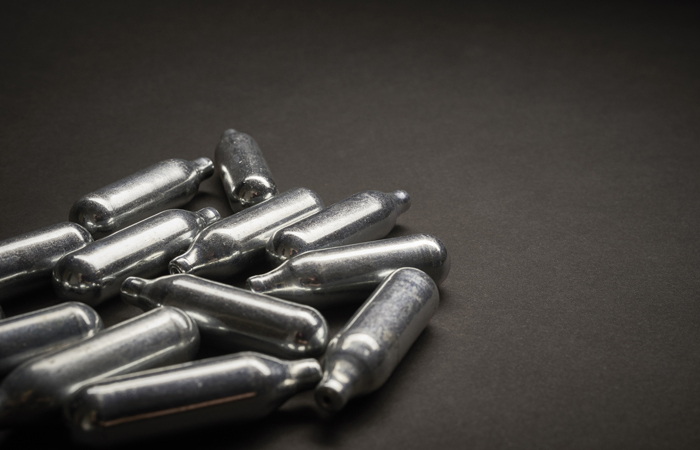Nitrous oxide
In Clinical
Follow this topic
Bookmark
Record learning outcomes
Pharmacy technician Vicky is checking some orders in the consultation room when there’s a knock on the door. She looks up and Kellie puts her head around the door, saying: “Surprise!”
“Gosh, hi Kellie!” exclaims Vicky. “And happy New Year! How are you? I haven’t seen you for ages.”
“I know, I meant to pop in before Christmas to say hello to everyone,” replies Kellie, who worked at the pharmacy as a counter assistant before leaving to have her daughter. “It just got really busy, but wait, I’ve got another surprise for you!”
Through the door bounces Eva, Kellie’s young daughter, saying: “Hi Vicky! Look, I found treasure outside!”
She holds out her hand and reveals two small silver canisters.
“Wow Eva, look at that!” says Vicky, taking them from her. “I tell you where there is more treasure: if you go and ask Michelle in the dispensary, she’ll show you where we keep the biscuits!”
As Eva skips out, Vicky turns to Kellie: “You know what these are, don’t you?”
Kellie shakes her head: “No, I’ve got no idea, but I see them everywhere. What are they?”

Answer
The canisters that Eva has found are nitrous oxide, a gas usually transferred into balloons before being inhaled recreationally. The drug has anaesthetic and depressant properties, causing a brief feeling of euphoria – which usually manifests as feeling happy, relaxed and giggly, and gives rise to the popular name “laughing gas” – as well as light headedness and dizziness. Some users experience headache, nausea and hallucinations.
Although the sensation is relatively brief, nitrous oxide is not without its risks and pharmacy teams can help raise awareness:
- Inhaling the gas directly from the canisters is dangerous because it is under pressure and can cause physical injuries
- Some people try and prolong the effect by inhaling it in an enclosed space, for example, with a plastic bag over their head, which obviously carries further risk
- Another way in which people may try and prolong the effect is by using several canisters in a short space of time, but this can cause loss of consciousness or suffocation due to
the brain cells being starved of oxygen - Regular or heavy use of nitrous oxide can deplete vitamin B12 levels, leading to anaemia and nerve damage
- Mixing drugs is never a good idea, but combining nitrous oxide with alcohol brings with it specific risks because both are depressants and so the effects on heart and breathing rate, etc. can be potentiated.
The bigger picture
Nitrous oxide is covered by the Psychoactive Substances Act 2016, meaning it is illegal to supply – note that money does not have to change hands for this to happen – or produce for its psychoactive effect, but not possess. Confusingly, it is available to purchase, as it has uses in the catering industry, and is widely used medically as an anaesthetic: “gas and air” is nitrous oxide mixed with oxygen – an important distinction to how it is used recreationally – commonly used during childbirth and in emergency trauma situations.
According to NHS England data, in 2018 nitrous oxide was the third most common recreational drug used by 11-15-year-olds, exceeded only by cannabis and volatile substances such as glue, gas, aerosols or solvents.
Extend your learning
- Most recreational drugs are known by a number of names. Find out what some of these are for nitrous oxide at: Talk to Frank
- Find out more about nitrous oxide, in particular the cost of obtaining it for recreational use at: The Drugs Wheel
- Get an idea of how normalised nitrous oxide use is in certain environments by reading the news story at: Metro
- Do you think nitrous oxide is being used near your pharmacy? Finding the canisters on the street or pavement, or perhaps in nearby parks etc, are all indicators. If so, do you think it would be helpful to have some information available in your pharmacy? A good leaflet that is available for download can be found at: Drug Wise
- Nitrous oxide is often regarded as a bit of fun but that is not always the case. Find out how many times nitrous oxide has been cited as the cause of death on a death certificate in England and Wales between 2001 and 2016 by scrolling down to section 8
- Read about some of the confusion around the UK drug laws relating to nitrous oxide.
